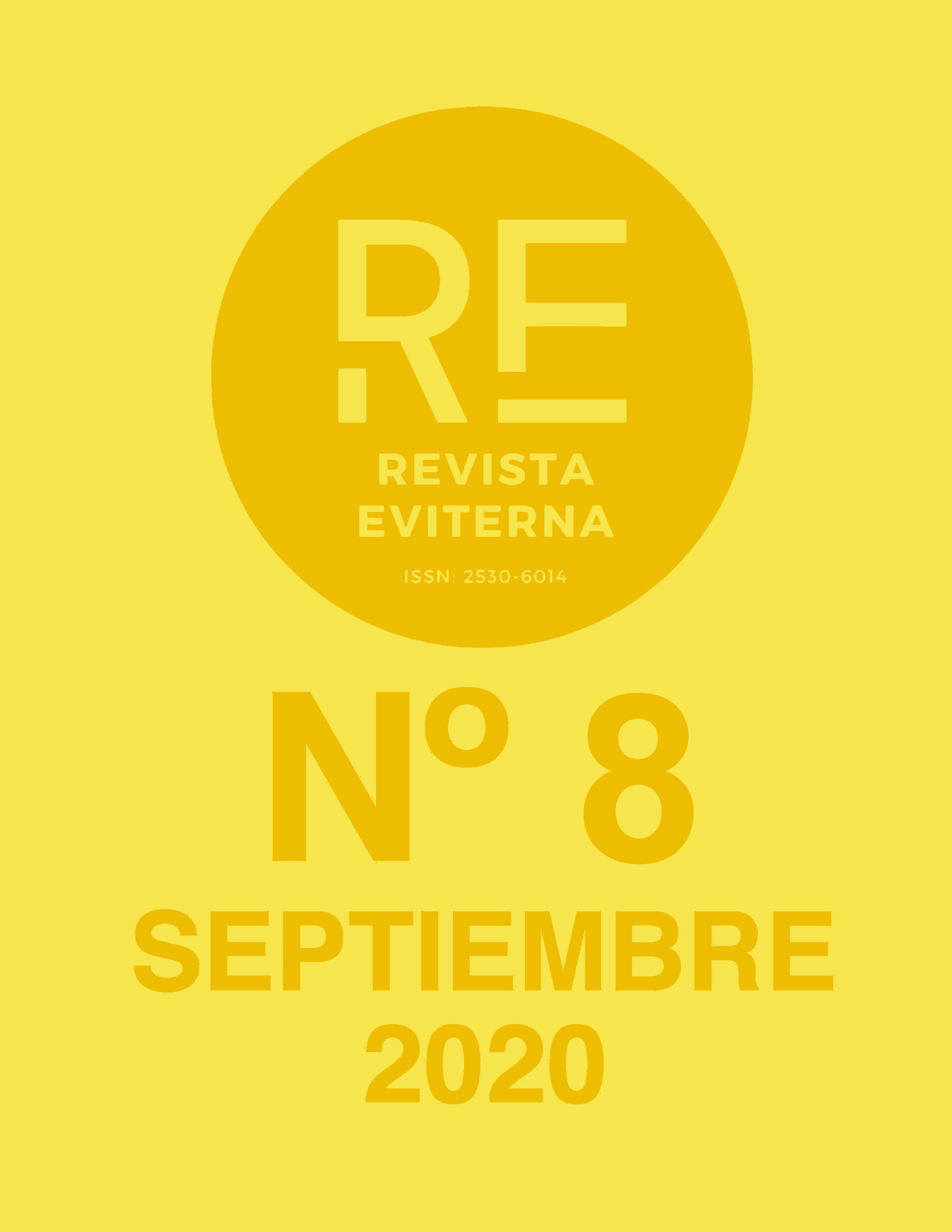The Virgen del Prado dressing room in Ciudad Real Cathedral
Brief notes of its architecture
DOI:
https://doi.org/10.24310/Eviternare.vi8.9827Keywords:
Dressing room, cathedral, Ciudad Real, Virgen del Prado, architectureAbstract
Among the architectural types of the Spanish Baroque, the dressing room is one of the most important spaces within ecclesiastical architecture. The devotion instilled by the Council of Trent to the Virgin Mary and its constant comparison with royalty, will be the reasons that justify the sumptuousness of these sacred chambers. A place of great transcendence in which the divine and the human merge through the richness of their constructive materials and the mystery of these hidden spaces that are found within the temples. In this study we will focus on the case of the Patroness of Ciudad Real, the Virgen del Prado which, although it is one of the great unknown within the iconic dressing rooms that we find in the Spanish geography, is undoubtedly one of the most relevant to the region in which it is located. Along with the formal analysis of its architecture and its contextualization, both conceptual and spatial, we will proceed to delve into its history and go through the bibliography, from the first known data to the most recent studies, will be the objectives of this study.
Downloads
Metrics
Publication Facts
Reviewer profiles N/A
Author statements
Indexed in
-
—
- Academic society
- N/A
- Publisher
- Universidad de Málaga
References
Almarcha Núñez-Herrador, E. y Herrera Maldonado, E. (2000), “El dictamen de la Academia en un espacio medieval: la torre de la Catedral de Ciudad Real”. En VV.AA., Cuadernos de Estudios Manchegos (pp. 267-278), nº 23, 24, I.E.M: Ciudad Real.
Bonet Correa, A. (1978). Andalucía Barroca, arquitectura y urbanismo, Ediciones Polígrafa: Barcelona.
Delgado Merchán, L. (2005). Historia documentada de Ciudad Real, 1907, Ed. Facsímil, Caja Rural de Ciudad Real: Ciudad Real.
Galán Cortés, V. (2015), “Una estancia celestial en la tierra, El camarín”. En Rodríguez Miranda, Mª A. (Coord.), Nuevas perspectivas sobre el Barroco Andaluz. Arte, Tradición, Ornato y Símbolo (pp. 517-530), Universidad de Granada: Granada.
Gómez Moreno, H. (1969). Notas históricas alrededor de la Imagen de la Santísima Virgen del Prado, patrona de Ciudad Real, Imprenta Calatrava: Ciudad Real.
Herrera Maldonado, E. (1992), “El Barroco”. En VV.AA., La provincia de Ciudad Real III: ARTE Y CULTURA, (pp.121-174), Diputación Provincial de Ciudad Real. Biblioteca de autores y temas manchegos: Ciudad Real.
Herrera Maldonado, E. y Sainz Magaña, E. (1997). Ciudad Real y su Provincia, Vol.3, Géver, Sevilla, 1997.
Hervás y Buendía, I. (2002), Diccionario histórico, geográfico. Biográfico y bibliográfico de la provincia de Ciudad Real, Ciudad Real, 1890, Ed. Facsímil, Biblioteca de Autores Manchegos: Ciudad Real.
Kubler, G. (1957). La arquitectura de los siglos XVII y XVIII, Plus Ultra: Madrid.
Molina Chamizo, P. y Crespo Cárdenas, J. (2011), “Un nuevo mecenas en Ciudad Real: el contador Felipe Muñiz y el camarín de la Virgen del Prado”. En Vera Cruz (pp. 53 – 61), nº 22, 2011.
Portuondo, B. (2007), Catálogo monumental artístico-histórico de la provincia de Ciudad Real, Ciudad Real, 1917, Ed. Facsímil, Biblioteca de Autores Manchegos: Ciudad Real.
Ramírez De Arellano, R. (1914), Al derredor de la Virgen del Prado, Patrona de Ciudad Real, Imprenta del Hospicio Provincial: Ciudad Real.
Sánchez Martín, C. y Cruz Alcañiz, C. de la (2004), “Adición al catálogo de Lucas Jordán: la Concepción del camarín de Nuestra Señora del Prado de Ciudad Real y su contexto inmaculadista”. En Anales de Historia del Arte (pp. 213 - 227), nº 14.
Tovar, V. y Martín González, J.J. (1990), El arte del Barroco I, Arquitectura y escultura, Taurus: Madrid.
Downloads
Published
How to Cite
Issue
Section
License
All the contents published in Revista Eviterna are subject to the Creative Commons Reconocimento-NoComercia-Compartirigual 4.0 license, the full text of which can be found at <http://creativecommons.org/licenses/by-nc-sa/4.0>
They may be copied, used, disseminated, transmitted and publicly exposed, provided that:
The authorship and original source of your publication (Journal, editorial and URL of the work) are cited.
They are not used for commercial purposes.
The existence and specifications of this use license are mentioned.

Copyright is of two kinds: moral rights and patrimonial rights. Moral rights are perpetual, inalienable, inalienable, inalienable, inalienable and imprescriptible prerogatives.
In accordance with copyright legislation, Revista Eviterna recognizes and respects the moral rights of the authors, as well as the ownership of the economic right, which will be transferred to the University of Malaga for dissemination in open access.
The economic rights refer to the benefits obtained by the use or disclosure of the works. Revista Eviterna is published in open access and is exclusively authorized to carry out or authorize by any means the use, distribution, disclosure, reproduction, adaptation, translation or transformation of the work.
It is the responsibility of the authors to obtain the necessary permissions of the images that are subject to copyright.







12.png)



